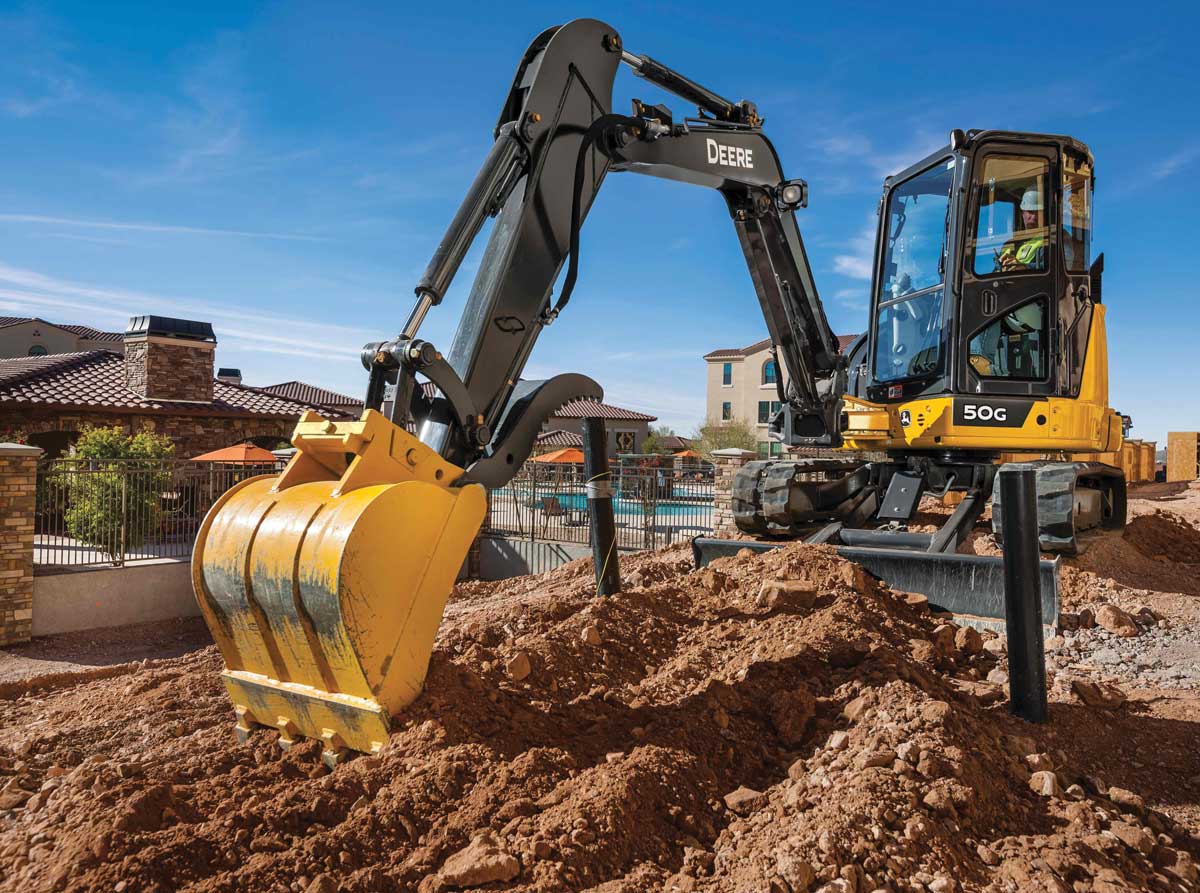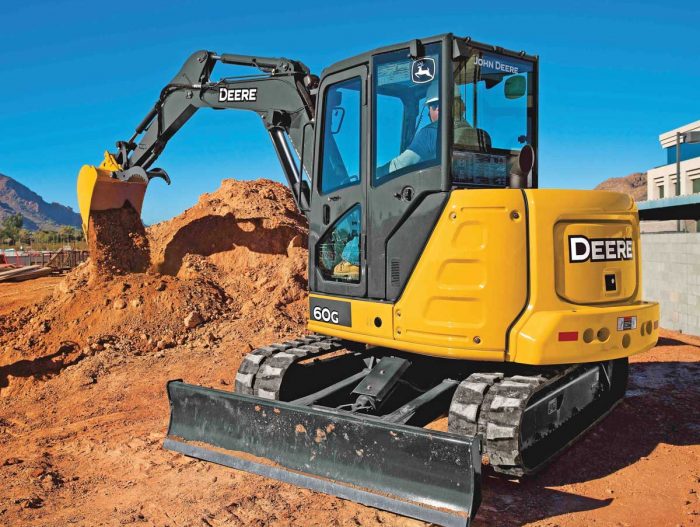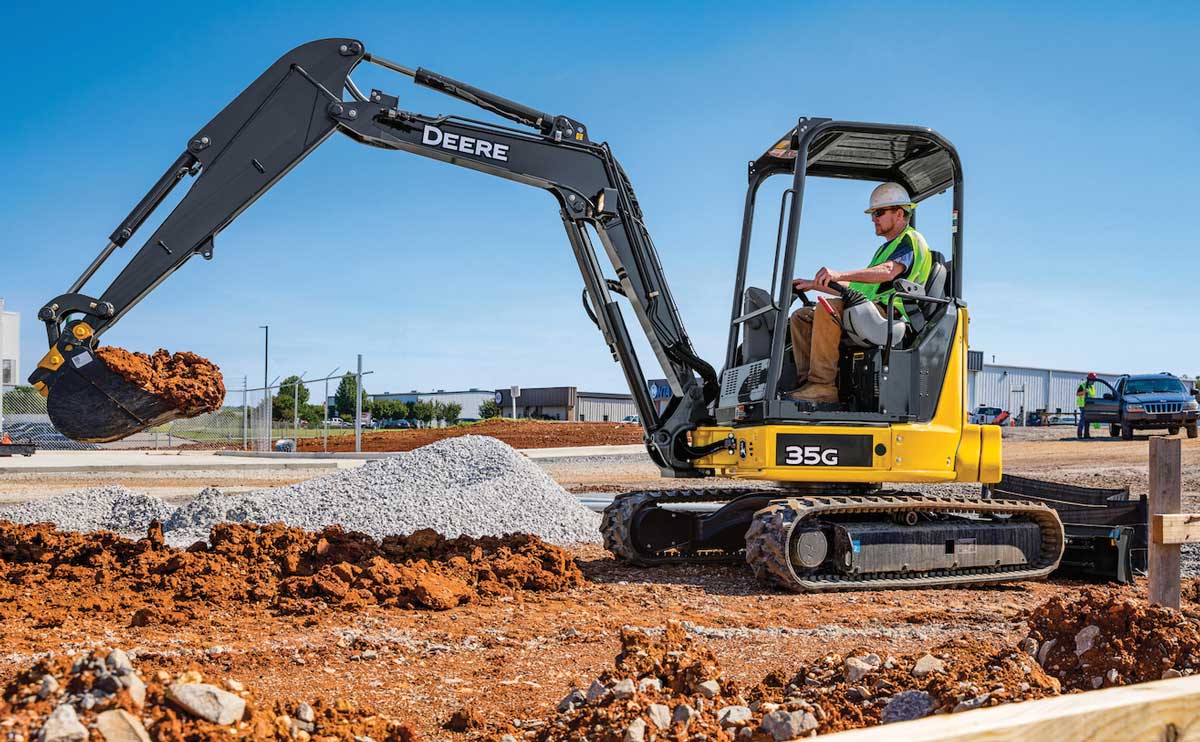Mini Excavator Maintenance Tips: Upkeep Is a Priority for Machine Productivity

Compact excavators have increased in popularity in recent years, and in order to keep your machines up and running on the job, it’s best to incorporate a maintenance routine and follow maintenance best practices to keep them digging, trenching and operating for longer. In order to keep your equipment performing at peak levels, it is critical that maintenance is prioritized accordingly. While it is essential to understand how to operate your machine, it’s equally, if not more important, to understand how to maintain each machine to extend the lifespan of the equipment and improve its resale value. Operators should always follow their suggested service procedure and refer to their machine owner’s manual for the most comprehensive maintenance routines. In addition, operators should prioritize daily walk-arounds, properly grease their machines, check their undercarriage and keep an eye on the sag of the excavator’s track.
Daily Walk-Arounds
Performing daily walk-arounds is key to ensure your compact excavator meets its productivity potential and to minimize downtime. When performing your walk-around, visually inspect the machine’s appearance and look for damage. Check the fluids — as in engine oil, engine coolant and hydraulic oil levels. Look for leaks and take a close look at wear items that could prevent the excavator from efficiently doing its job. Inspect the overall condition of hoses and components, with eyes peeled for anything out of the ordinary. Visual inspections of key wear components are particularly important. Warming up the machine at the beginning of the day and cooling down at the end of a shift is also an important step in protecting key engine and hydraulic components.
Operators are the first line of defense in making sure the excavator is in optimal operating condition to keep the jobsite productive. Regardless of whether or not your organization uses lube techs to fuel and lubricate machines, most companies still require an operator to perform a daily walk-around. It may seem redundant, but an extra set of eyes never hurts. Key inspection points will vary between models, but the concept remains the same. Completing this daily inspection helps to spot potential problems early, which is beneficial on multiple fronts. For one, it saves operators money by amending issues with individual parts and/or overall functionality, so that larger, more costly issues with performance and longevity are avoided.
It’s also very important to consider how the excavator’s features can be advantageous to improve the efficiency of the machine and lower its operating cost. The saying “work smarter, not harder” absolutely applies in the construction industry. It’s important that operators use the excavator and its features to their full potential to be more productive while also being more comfortable.
Check the Undercarriage

Keep in mind that undercarriage maintenance is also key to the mobility and productivity of an excavator. Ignoring track maintenance will ultimately increase the operating cost. At the end of the day, operators should check their undercarriage for excessive buildup or packing of material. Material buildup can cause components to freeze up and create premature damage. Always clean out undercarriages before material dries or freezes.
Service Intervals
While service intervals are based on hours of operation, sticking to a maintenance schedule allows customers to predict owning and operating costs more accurately and fix maintenance costs. Despite this, any time a machine has been sitting inactive for an extended period of time, it’s important to inspect a little more thoroughly than usual and be proactive when necessary. Checking fluid levels, filters, grease and maybe even fluid sampling from each system on the excavator after long periods of machine inactivity could provide reassurance that the machine is in optimal operating condition.
When examining your machine on a routine basis, it’s crucial to get into not only a regular routine but complete the checks in the same order. Every time you do an inspection, start in the same spot and complete your inspections around the machine ending in the same place you started. This routine makes it easier to spot what is normal vs. abnormal and makes sure no checks get missed.
Greasing the Machine
On every piece of equipment, routine greasing offers a lot of benefits. Not only does proper grease improve component life, but it will have a large impact on the performance and accuracy of the machine. Greasing a compact excavator ensures the longevity of moving parts and components. A lack of grease will cause premature wear. Greasing the machine at the beginning or end of the day is an important step of reducing downtime.
Track Sag Adjustment

Track tension is an easy check that can pay dividends as it can greatly affect undercarriage component life. Knowing how these components should wear throughout their life can prevent premature undercarriage replacement. Checking and adjusting track sag is vital to compact excavator maintenance. Tracks that are too tight can lead to excessive wear. Tracks that are too loose can leave the machine unstable, and the track can actually come loose from the sprocket. To maintain proper track sag, safely remove all debris between the track and the sprocket and raise one track off the ground. Measure from the bottom of the center roller to the inner ridge of the rubber track. The distance is known as your track sag. Consult your operator’s manual for track sag specifications to ensure your track is properly adjusted, but usually you want to see about 0.5 in. of sag.
Not all undercarriages or machines are the same, so be sure to consult your owner’s manual for both specifications and proper procedures. Your dealer will also be a valuable source of information.
Justin Steger is the solutions marketing manager, site development and underground, for John Deere.
Mini excavators are making big waves on jobsites all over North America. Click here for the latest news on these machines and the companies that make them.




